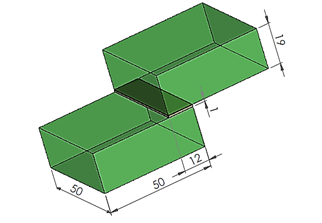Influence of Bonded Air- Versus Tin-side on the Shear Strength of Glass-to-Glass Joints of Transparent Epoxy Adhesive at Elevated Temperatures
DOI:
https://doi.org/10.47982/cgc.9.497Downloads

Abstract
Given the need to create a sustainable future with limited resources and growing environmental concerns, high-strength adhesives offer an alternative and potentially more efficient load-bearing connection to conventional bolted connections in glass structures. However, there is a lack of knowledge on the elevated-temperature effects on the mechanical strength of these connections. Therefore, in this paper, an experimental program was conducted to evaluate and compare the performance of transparent bonded glass joints. A transparent epoxy adhesive Loctite EA 9455 and two glass types (float and low-iron glass) were chosen to conduct experiments. The differences in surface wettability, between air and tin-sides were examined for both glass types. Results showed that water contact angle measurements on float glass sides were 39.25 % and 3.98 % higher than measurements for low-iron glass on air- and tin-sides respectively. Furthermore, tensile and shear tests were performed on bulk-cured adhesive samples and bonded glass-to-glass block shear specimens respectively, at room temperature (RT), 40 °C, and 80 °C. The results showed that tensile and shear strengths decreased with increasing temperatures. Furthermore, the shear strength was influenced by the surface properties of the glass sides. Indeed, results on air-side likewise tin-side of low-iron glass demonstrated higher resistance for all tested temperatures in comparison with the float glass.
Published
Issue
Section
Adhesives & Composites
License
Copyright (c) 2024 Yasmina Boutar, Martina Eliášová, Petra Tichá, Zlata Kelar Tučeková, Jakub Kelar

This work is licensed under a Creative Commons Attribution 4.0 International License.



